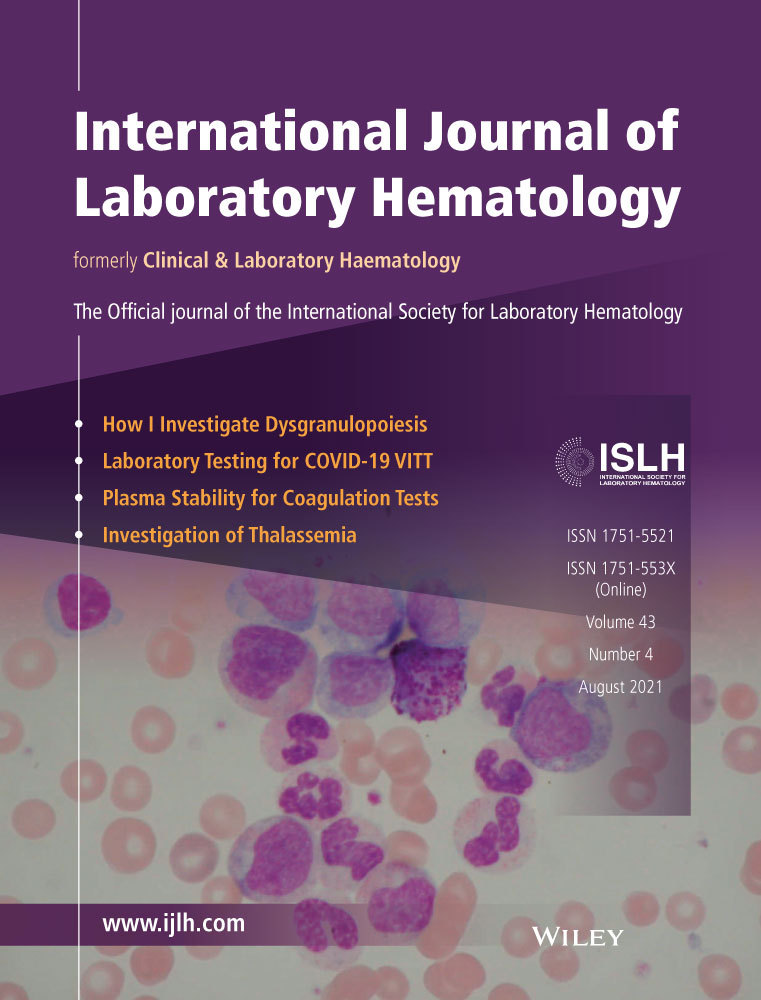Systematic application of fluorescence in situ hybridization and immunophenotype profile for the identification of ZNF384 gene rearrangements in B cell acute lymphoblastic leukemia
Abstract
Introduction
ZNF384 gene fusions resulting from translocations with several partner genes have been described in B cell acute lymphoblastic leukemia (B-ALL) with a characteristic immunophenotype (aberrant CD13 and or CD33 with dim CD10). The prognosis of patients with this rearrangement appears to depend on the fusion partner. ZNF384 rearrangements have been identified by high through put technologies such as RNA sequencing in most of the studies published. We tested the feasibility of using the characteristic immunophenotype as a tool to screen for patients with ZNF384 translocations which can be subsequently confirmed by cytogenetic / molecular methodologies.
Methods
ZNF384 rearrangements in B-ALL patients at diagnosis with CD10 <80% and were negative for the BCR-ABL1 fusion (n = 109) were identified by fluorescence in situ hybridization followed by confirmation by reverse transcriptase-polymerase chain reaction and Sanger sequencing. The end of induction measurable residual disease evaluated by flow cytometry for these patients was obtained from patient records.
Results
ZNF384 translocations were identified in 14 patients and were cytogenetically cryptic in 13. EP300-ZNF384 was the most common fusion partner (n = 12), while TAF15-ZNF384 and TCF3-ZNF384 were identified in 1 patient each. End of induction MRD by flow cytometry was positive in 5 of 8 patients with the EP300-ZNF384 fusion treated at our center.
Conclusion
Our findings show a practical approach for the identification of ZNF384 gene rearrangements by widely available technologies and indicate that the response to therapy may be heterogeneous even in this subset, which has been reported as having a favorable prognosis.
CONFLICT OF INTEREST
Nil.
Open Research
DATA AVAILABILITY STATEMENT
Data available on request from the authors.




